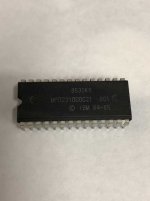Anthony Beckett
Member
Hi all -
I have been able to read the IBM JX ROMs using my EPROM burner and successfully burn them to 27512s.
But life cannot be this simple, and of course, the IBM JX does not like the copied ROMs one bit. Reading online, there are different pinouts and I should read the technical reference guide to see what may be different. But there isn't a technical reference guide (that I have seen!) for the IBM JX.
I was hoping that a PCjr specialist may have a EPROM/ROM adaptor design that I can build to use EPROMs for the JX.
Looking at some photos online, the PCjr does not appear to have socketed ROMs like the JX does - which is interesting and may be a problem for this discussion.
I also have been unsuccessful in finding any IBM PCjr BIOS/ROM upgrades on webpages.
Any assistance would be appreciated.
Thanks;
Anthony
http://www.thepcmuseum.com/ibmjx
I have been able to read the IBM JX ROMs using my EPROM burner and successfully burn them to 27512s.
But life cannot be this simple, and of course, the IBM JX does not like the copied ROMs one bit. Reading online, there are different pinouts and I should read the technical reference guide to see what may be different. But there isn't a technical reference guide (that I have seen!) for the IBM JX.
I was hoping that a PCjr specialist may have a EPROM/ROM adaptor design that I can build to use EPROMs for the JX.
Looking at some photos online, the PCjr does not appear to have socketed ROMs like the JX does - which is interesting and may be a problem for this discussion.
I also have been unsuccessful in finding any IBM PCjr BIOS/ROM upgrades on webpages.
Any assistance would be appreciated.
Thanks;
Anthony
http://www.thepcmuseum.com/ibmjx

